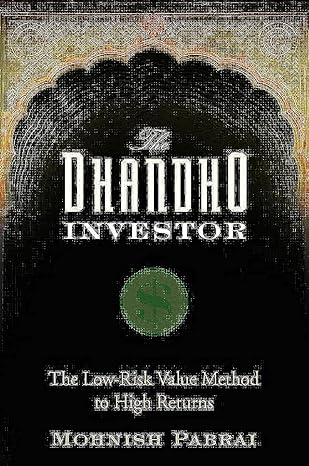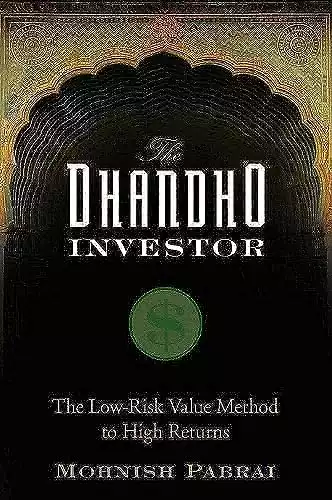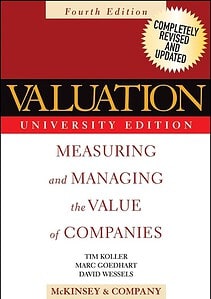Overview : The Dhandho Investor -The Low-Risk Value Method to High Returns
-
Book Title: The Dhandho Investor: The Low-Risk Value Method to High Returns
-
Author: Mohnish Pabrai
-
Publication Date: Originally published in 2007
-
Rating: 4.5
-
price: $24.99
-
Pages: 208
About the Author
The Dhandho Investor is authored by Mohnish Pabrai, a successful investor and entrepreneur who simplifies value investing by drawing lessons from Indian business principles. Pabrai shares practical strategies for minimizing risk while maximizing returns.
Introduction The Dhandho Investor by Mohnish Pabrai
The Dhandho Investor by Mohnish Pabrai is a compelling guide to value investing, inspired by the entrepreneurial mindset of Indian business communities. Pabrai simplifies complex investment strategies, focusing on minimizing risk while maximizing returns. With practical examples and timeless principles, the book empowers readers to adopt a low-risk, high-reward approach, making it a must-read for aspiring investors.
Buy The Dhandho Investor Online Here
The Dhandho Investor Book Summary
The book tells about practical and straightforward approaches to value investing inspired by the entrepreneurial spirit of Indian business owners, or “Dhandho” entrepreneurs. In The Dhandho Investor, Mohnish Pabrai shares his framework for minimizing risk while maximizing returns. He emphasizes investing in businesses with low-risk, high-uncertainty opportunities and demonstrates how patience and discipline can lead to success. Through real-world examples and simple principles, the book highlights the importance of understanding businesses and buying them at a bargain. This The Dhandho Investor book summary reveals valuable lessons for anyone seeking to build wealth through smart, calculated investment decisions.
Analysis of Key Themes
1. Simplicity in Investment Selection
Pabrai advocates for investing in businesses that are easy to understand. This principle aligns with Warren Buffett's famous advice to invest within your "circle of competence." By focusing on simple, comprehensible business models, investors can better assess risks and potential returns.
2. Capitalizing on Market Inefficiencies
The book emphasizes the importance of identifying and exploiting market mispricing. This approach is particularly relevant in today's volatile market conditions, where emotional reactions can create significant discrepancies between a company's stock price and its intrinsic value.
3. The Power of Patience and Compounding
Pabrai underscores the transformative power of compound interest, encouraging a long-term perspective in investing. This principle is crucial in personal finance, highlighting how consistent, patient investing can lead to substantial wealth accumulation over time.
Writing Style and Accessibility
Pabrai's writing style is refreshingly accessible, making complex financial concepts digestible for both novice and experienced investors. He skillfully weaves cultural insights with financial wisdom, creating an engaging narrative that goes beyond typical investment guides.
"Heads, I win; tails, I don't lose much" - Mohnish Pabrai
This key quote encapsulates the essence of the Dhandho approach, emphasizing the importance of asymmetric risk-reward scenarios in investing.
The Dhandho Investor Strengths and Weaknesses
Strengths:
- Unique cultural perspective on value investing
- Clear, actionable investment principles
- Emphasis on risk management in wealth building
Weaknesses:
- Heavy reliance on anecdotal evidence
- May not appeal to high-risk, high-growth investors
- Limited discussion on modern market trends like cryptocurrencies
The Dhandho Investor Related Books
While "The Dhandho Investor" shares similarities with classic value investing texts like Benjamin Graham's "The Intelligent Investor," it offers a fresh perspective by incorporating cultural insights and real-world case studies. Compared to more technical works like "Security Analysis," Pabrai's book is more accessible to the average reader, making it an excellent entry point into value investing principles.
Relevance to Current Market Trends
In today's rapidly evolving financial landscape, characterized by the rise of cryptocurrencies and the increasing influence of retail investors, Pabrai's principles remain remarkably relevant. The book's emphasis on fundamental analysis and long-term thinking provides a stabilizing perspective amidst the often-frenzied world of day trading and speculative investments.
Highlights from The Dhandho Investor
Low-Risk, High-Return Strategy: Focus on investments with minimal downside risk and significant upside potential.
Invest in Simple Businesses: Prioritize businesses that are easy to understand and operate.
Focus on Uncertainty, Not Risk: Leverage uncertain situations where the odds are in your favor.
Margin of Safety: Always invest with a significant margin of safety to protect against losses.
Concentrated Investing: Invest heavily in a few high-conviction ideas rather than diversifying broadly.
Patience and Long-Term View: Success comes from waiting for the right opportunities and holding investments for the long term.
Heads, I Win; Tails, I Don’t Lose Much: Emphasizes asymmetric risk-reward scenarios.
Conclusion: A Valuable Addition to Your Financial Library
"The Dhandho Investor" earns a solid 4.5 out of 5 stars for its unique approach to value investing and its ability to make complex financial concepts accessible. Pabrai's work serves as a reminder that successful investing doesn't require complex strategies or high-risk gambles. Instead, it emphasizes the timeless principles of simplicity, patience, and disciplined analysis.
For investors looking to build long-term wealth while managing risk, "The Dhandho Investor" offers invaluable insights. Whether you're new to investing or a seasoned market participant, this book provides a fresh perspective on how to navigate the complexities of the financial world with confidence and clarity.
Ready to transform your investment approach?
Get your copy of "The Dhandho Investor" today and start your journey towards more intelligent, low-risk investing.
Note: This review is based on the author's opinion and should not be considered financial advice. Always conduct your own research and consult with a qualified financial advisor before making investment decisions. In conclusion, this article has provided an overview of the topic at hand.





